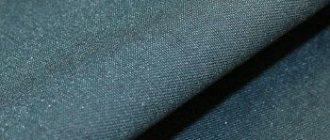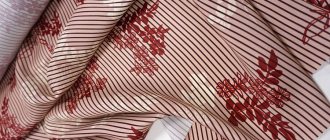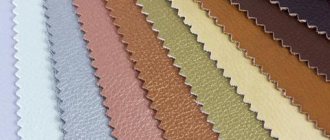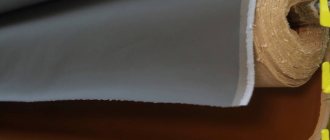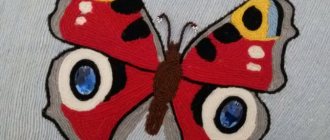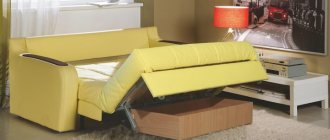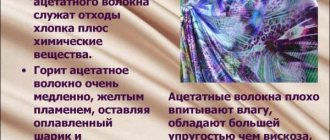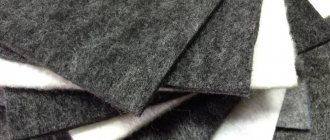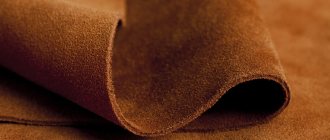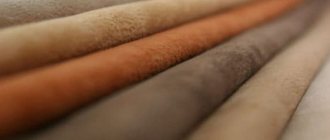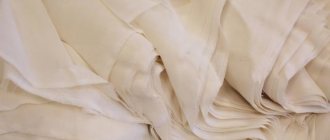Literally from the moment of its invention, tapestry has been considered a luxurious and expensive fabric. After all, it was not without reason that back in the Middle Ages, wealthy people used this material to decorate furniture and create decorations for castles and palaces. In ancient times, tapestries were made by hand. It was a long and painstaking work, which resulted in luxurious woven paintings called tapestries. Although tapestry fabrics have undergone some changes over the course of their existence, they remain loved and in demand by both designers and ordinary people.
A little history
Tapestry - to understand what kind of fabric it is, its history will give us the answer. Tapestry as a technique of weaving threads appeared during the reign of the ancient Egyptian pharaohs. This material depicted biblical, ornate, antique subjects and ornaments. In those days they were done manually and the cost was very high. But then, with the development of world industry, they began to be performed on weaving machines.
Tapestry fabric got its name in the 17th century, this happened when 2 French brothers (their last name was Gobelin) opened the production of dense decorative fabrics. But since the 18th century, the concept of tapestry fabric materials included exclusively hand-woven, double-sided, heavy textiles.
Interestingly, both ordinary people and experts call this name almost any heavy fabric that has been woven by hand or using special equipment and is used to decorate clothes, cover flooring, walls or furniture.
Find out why chenille is interesting in another article.
Antique, photo:
Features of the material
After the Frenchman Joseph Jacquard invented a loom for making complex patterned fabrics at the beginning of the 18th century, a new era began for tapestries. Now this luxurious, exquisite fabric began to be produced in large quantities.
Nowadays, tapestry fabric is made using jacquard weave. If the production of an ordinary jacquard fabric requires 2-3 threads, then to produce woven paintings you will need more than ten fibers of different colors and textures.
In tapestry fabrics, the weft and warp must meet certain requirements, only then the picture will look natural. The weft threads must be elastic and the warps must be very strong.
Most often, the following materials are used for the production of tapestries:
- Sheep wool is a strong natural fiber that can be easily dyed any color;
- linen, cotton - allow you to make light, breathable materials;
- silk is a natural fiber that gives the product elegance and noble shine;
- synthetic threads;
- threads with added metal (Lurex).
Typically, tapestries depict paintings by famous artists, floral arrangements, or landscapes. Recently, new technologies have emerged that make it possible to transfer even photographs onto fabric.
Composition and characteristics
Tapestry is a cotton or synthetic fabric, the production features of which depend on the intended use. The composition of the tapestry fabric will depend on the manufacturing method and the intended use of the textile.
The composition of tapestry material in the modern world includes:
- polyester;
- wool;
- silk;
- cotton;
- acrylic;
- viscose;
Expensive models with a sophisticated appearance are made from cotton, while “serial” models are made from a synthetic base (they have increased wear resistance).
Recommendations for product care
The tapestry is somewhat capricious in care, so it is important to remember some rules.
How to care for a tapestry:
- Dry cleaning is preferred.
- It is advisable to protect from direct sunlight.
- Stains and local contaminants are removed with special compounds without bleaching components.
Tapestry is a unique structural canvas with original colors and patterns. Production involves the use of the twill weave method, as for Boston and Arben fabrics, in which the warp threads create the main motif, and all the additional ones create the background and structure.
Numerous varieties are used for interior decoration, making furniture upholstery, curtains, and clothing.
Advantages and disadvantages
Any description of tapestry fabric will necessarily say about the beauty and visual appeal of this type of textile, but the advantages also include:
- strength,
- chemical resistance,
- durability,
- ease of care,
- versatility of application.
See the description of the Cordura material at the link.
However, this material also has some disadvantages. The main ones:
- high price
- relatively heavy weight
Under normal conditions of use, you may not encounter any shortcomings at all.
What is good or bad about tapestry?
Any fabric for curtains, including tapestry, is characterized by its own advantages and disadvantages.
Pros:
- Unsurpassed strength. The material does not tear at all, it is even difficult to cut it with scissors.
- Durability. Paintings on fabric can be distinguished even after centuries, but the original freshness of the colors remains for at least 10 years.
- Variety and versatility. Thanks to the ability to apply any pattern to the tapestry, you can use it to decorate the interior in almost any style.
- Hypoallergenic. If high-quality natural materials are used to create a tapestry, it will not attract dust and become electrified, and therefore will not contribute to the development of allergies.
- Resistant to stains. To keep the product clean, it is treated with special products.
Minuses:
- Tapestry cannot be used to create clothing, since the material is characterized by rigidity and heaviness.
- Cannot be machine washed.
- The product should also not be ironed due to the possibility of creases and folds.
Application: how to use?
In the photo of tapestry fabric you can see that this material is most often used for upholstery. Indeed, in recent years, tapestry fabrics have been positioned exclusively as furniture fabrics, but in reality the scope of their use is quite wide. Despite the fact that tapestry fabric is considered exclusively “furniture” in the modern textile industry, its scope of application is quite wide.
Products:
- Decor: it is also used for upholstering walls indoors to create an interesting and unusual stylistic interior.
- As upholstery for ottomans, armchairs, sofas. Read about the features of using fabrics for furniture in a separate article.
- Thick curtains (drapes, curtains);
- Pillows;
- Tapestry fabric is also widely used for bedspreads; read about them in a separate article.
- And even for clothes (photo above);
In addition, it is used to produce paintings, decorative elements and accessories (curtains, pillowcases, bedspreads, etc.).
Scope of application: what is sewn from fabric
The universal fabric is most often used for upholstery of upholstered furniture, sewing curtains, bedspreads and interior textiles. The density of the canvas for this varies between 250 – 350 g/m². Often original bags and even shoes are sewn from this fabric. Depending on the type of weave, the fabric can be single- or double-sided, which significantly expands the scope of application.
Tapestry clothing is also loved by many famous designers. To create a unique image, the cut is of great importance, which is selected individually for each pattern of this canvas. The density of the fabric, unlike nettle fabric, for sewing clothes usually does not exceed 180 g/m². If this indicator is exceeded, it will be more difficult to work with the fabric, as well as to wear such products.
The products are distinguished by their original appearance and high practicality. Colors and motifs can be changed endlessly, adapting to fashion trends, so such outfits will be relevant at all times.
Care
To clean this material, it is better to use a brush. Can't be washed or ironed. Pets may enjoy sharpening their nails on this cloth, you need to take this fact into account when placing it in the house. Detailed information about fabric care can be obtained on our website in the special “Care” section, where the features of the use of materials are also indicated.
Types of tapestry
There are many types of tapestry. Paintings and tablecloths, napkins and pillowcases for sofa cushions, furniture upholstery, handbags, belts, gloves and even shoes are made from tapestry.
The woven picture should fit the overall design of the room and subtly convey the mood of the owner and the atmosphere in the house.
Here are some common themes that tapestry lovers often choose.
- East style. An original and unique plot, full of philosophy and tranquility, distinguishes paintings created in the oriental style. Images of people taming wild animals will harmoniously fit into the interior.
- Country. For those who love and appreciate antiques, tapestries have been developed that take you back to the past. Such paintings go well with a fireplace and pottery, rare books and homemade rugs.
- Scandinavian style. Naturalness and simplicity distinguish this type of tapestries. To decorate a room in a Scandinavian style, paintings in light colors are more suitable: grayish, blue, light turquoise.
- Provence. Tapestries in the Provence style are associated with the sea and the sun. Magnificent flowers, beautiful houses on the river or seashore remind of summer holidays. Such fabrics are often made from coarse cotton or bleached linen.
Tapestry is the best decoration for the interior
And today, these unique and beautiful products have become an alternative to carpets, drapes, pillowcases, and bedspreads. Tapestries are used as paintings, panels, and draperies when decorating stylish interiors. Modern manufacturers supply the markets with many different tapestries and tapestry fabrics.
In the range of manufactured products you can find products on different topics, which helps you decide on the choice of a particular tapestry for the appropriate style. Exclusive fabrics and exquisite tapestries will decorate a cottage, house or apartment.
- You can find products in Oriental or African style;
- beautiful themed tapestries for children's rooms;
- panels with animals, birds, landscapes and still lifes;
- religious themes and thematic tapestries.
Specialists allow you to realize all your fantasies - it can be a multi-colored picture or an ornate pattern. The tapestry can be made with a voluminous or smooth image. And the use of linen threads allows the product not to distort or stretch even after cleaning, and they also extend the life of the tapestries.
Where is it used?
- The undeniable advantages of the material invariably attract the attention of interior designers and furniture manufacturers. It is used to upholster sofas and armchairs, and makes beautiful bedspreads for sofas and chairs. Tapestry curtains, pillows, bedspreads will fill the room with exquisite dignity, and wall decoration and decorative panels will add a special aristocracy to the interior.
- Wonderful textiles can incredibly transform a room and fill it with character. Scenes of a royal hunt or battle paintings will bring brutality and significance to your home office. Pastel colors of the fabric will make the bedroom soft and romantic. Still lifes or landscapes will be organic in the living room.
- Today, tapestry actively occupies a position in the fashion industry. Coats and suits, original belts, bags and cosmetic bags made from this amazing fabric deserve admiration.
Examples of decorating rooms with different practical components
Bedroom
In ancient times, tapestries were hung behind the head of the bed not only to decorate the wall, but also to insulate the sleeping area. In poorly heated rooms it was necessary to fight not only the cold, but also dampness. Nowadays, tapestry plays an exclusively decorative role, often becoming an accent element of the interior, attracting the attention of anyone entering the bedroom.
For the bedroom, it is better to choose tapestries with calm, peaceful energy. Luxurious landscapes, images of flowers, birds and animals will create a pleasant atmosphere for peaceful sleep and relaxation. At the same time, you need to decide whether you want the tapestry to blend in with the overall color palette of the bedroom or act as a contrasting accent and how bright it can be. From the point of view of emotional relaxation, a bright, colorful tapestry will not interfere with your preparation for bed if it hangs above the head of the bed.
A floral pattern on a tapestry is an excellent choice for decorating a bedroom. After all, you can try to replicate the shapes and colors of plants in the textile design of windows or a bed.
Many of our compatriots live in cities where most of the year it is gloomy and damp outside. It is in bad weather that we lack warmth and comfort, bright colors for emotional nourishment and a charge of energy. Bright, colorful canvases on your walls can perform exactly this function. Not many people decide to use bright colors in decorating rooms and such a precaution is quite logical. But you can hang a colorful panel with an unusual pattern on neutrally decorated walls and end up with an incredibly colorful, non-trivial interior.
Particularly valuable pieces of textile art are placed on special stretchers or in frames with free margins. This way you can enhance the effect of presenting the original design and protect the fabric from unwanted effects.
Among other things, a tapestry can be used to highlight a particular area in a spacious, multifunctional room. For example, in the bedroom you can allocate a boudoir area or a reading corner.
Living room
If you have a large tapestry at your disposal (whether handmade or made using the latest equipment), you can’t think of a better place than the living room to display it. In a classic living room or a room decorated in a neo-classical style, a plot tapestry will look organic, decorating the interior.
For those who would not like to use classic motifs when decorating a living room and prefer a modern style, there is a way out by decorating the walls with tapestries. Choose a textile carpet with an original pattern, bright and colorful combinations and your living room will not be equal. If at the same time you manage to repeat some of the most colorful shades from the tapestry ornament in the textiles of sofa cushions, furniture upholstery or window drapery, the living room will have not only an original, but also a harmonious, balanced appearance.
Just one interior detail can change the entire image of your living room - a colorful tapestry. Saturated colors, unusual patterns or original combinations can raise the level of design, bring coolness or warmth, enthusiasm and positivity, calm or tone.
For an eclectic living room, decorated using textiles of different textures, colors and even styles, bright and colorful tapestries will be more than appropriate. Such a textile painting will support the overall positive mood of the interior and will become an effective addition to wall decor and more.
If you need an original interior element that would clearly indicate the chosen style for decorating the living room, use a textile panel or painting with a corresponding design. Here is an original way to design a common room in a nautical style.
Large fabric panels can make any living room wall an accent piece. If the colors of the tapestry are very bright and the design is expressive, then it is better to limit yourself to one such piece of wall decor. if unobtrusive ones are used in the execution of the textile painting. Pastel shades and calm motifs, you can create entire compositions without fear of burdening the interior of the common room.
Textile fabrics can serve not only as wall decor, but also protect the room from sunlight, acting as screens or zone the space, separating functional segments, but without interfering with traffic.
Office and workshop
In an office or library decorated in a classic style, a tapestry with a landscape will look most appropriate. A light wall background is a good choice for the most effective presentation of your family heirloom or modern piece of textile art.
The chalet style and hunting lodge design motifs are perfectly combined with the use of antique tapestries as wall decor. For such an office it would be logical to use wooden trim, elements of hunting - animal heads on the walls or skins (albeit not natural, but effectively imitating them) as carpeting for the floors.
If you want to create a bright, invigorating environment in your office or workshop that will encourage you to actively work or create, use a fabric painting with a dynamic pattern, colorful colors, and unusual combinations. But with such a choice, it is better to limit the brightness only to the wall in order to avoid excessive variegation, which will make the eyes look bright.
If you need a calm, neutral environment for comfortable work or creative activities, then choose delicate pastel shades for the design on a textile painting. Images of nature, plants, static landscapes or calm ornaments in a non-colorful design will be a harmonious addition to the design of your workplace.
Kitchen and dining room
In order for the tapestry on the wall to look advantageous, attract attention and present a clear picture, it is necessary to provide it with a plain, neutral background. Here is an example of the design of a dining room, for the decoration of which the most neutral color was used - gray. Against such a background, the ancient tapestry looks luxurious.
The tapestry in neutral tones looks luxurious, organic and at the same time restrained, the colors and textures of which are repeated in the upholstery of the chairs of a traditional dining room. Massive, high-quality furniture with beautiful carvings, exquisite tapestry, rich textiles are a wonderful combination for decorating a family room for meals.
Antique tapestries are too valuable to be nailed to the wall. To place textile paintings, a special tripod (something like a curtain rod) is usually used; it is often decorated with carved plugs to not only provide protection from the tapestry slipping, but also to decorate the resulting composition.
Here is an example of the use of bright tapestries made of fine fabric on either side of the entrance to the dining room. Colorful images look especially impressive against a snow-white background.
It happens that the entire concept of interior design of a room is built around one tapestry. As a rule, such a design element is a large textile painting with a bright, original pattern or unusual texture. It was this wall decor that became the center of attraction for all eyes in the next design project.
Children's room
Why not decorate one of the walls of the children's room with a bright or fun tapestry? If the room is decorated in neutral, light colors, then a bright, colorful design of a textile painting can bring a positive mood and raise the mood of the interior. If you know that your active child, on the contrary, needs objects in the interior of the room that encourage calmness, then use a neutral ornamental pattern or a natural landscape in a calm color scheme.
Story tapestry – where to hang it?
Initially, tapestries served not only as wall decor, but also served as insulation. They can be safely called fabric carpets. Hand-woven tapestries are made from wool and silk threads using gold and silver dyes. In Europe, the main motifs of fabric carpets were pastorals - scenes from life. Such tapestries often depicted landscapes with hunters, shepherds or walking girls. It is precisely these kind of narrative textile products that we most often associate with the very concept of tapestry.
Another direction in creating textile paintings is associated with the East. From there came to us exquisite landscapes, images of flowers and plants, including sakura, birds and animals, beloved by many oriental masters, and portraits. In such tapestries, gold threads and silk raw materials, dyed with natural dyes, were especially often used.
In the East, textile paintings were given special significance. Fabric scrolls served not only as decor for decorating a home; craftsmen believed that they were able to drive away evil spirits from the home or attract positive energy, luck and wealth.
Nowadays, tapestries are not only textile wall carpets, but also bedspreads, covers for decorative pillows, original panels and tablecloths, draperies for window and doorways and much more.
Narrative tapestries, reminiscent of those hand-woven by our ancestors, would look great in a classic living room. Golden threads in textile carpets combine perfectly with the shine of luxurious chandeliers and sconces, echoing the gilded decorative elements of mirror and picture frames.
If your living or dining room has a fireplace, you can use the space above it to place a story tapestry. Obviously, the hearth most often acts as the center of attraction in the room, and with the support of a fabric pattern, the entire ensemble will look especially impressive.
If you are still hesitant to hang a story tapestry in the rooms where you spend a lot of time, in the bedroom or living room, try using wall decor in additional rooms. A tapestry with a landscape will look great in a spacious hall or hallway. Some private homes and hallways have enough free space to accommodate wall decor in the form of fabric rugs. The main thing is that there is enough free space to view the entire textile picture.
